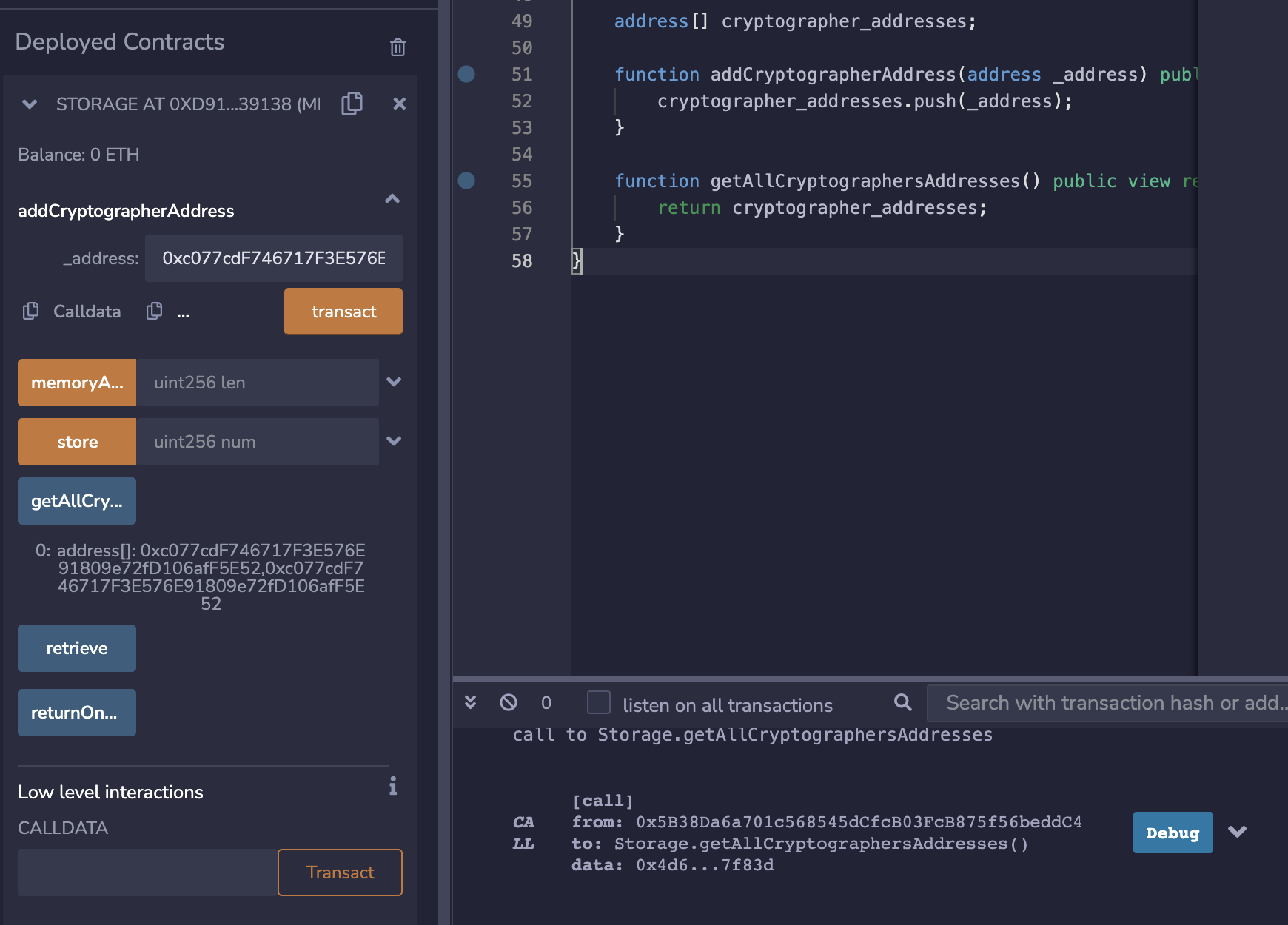在 Solidity 中,array 是一个有序的列表,索引从 0 开始,
数组类型
固定长度数组和可变长度数组
下面的示例中, T 为元素类型, K 数数组长度。
// 固定长度
T[k]
// 动态长度
T[]
一维数组和多维数组
上面的例子其实是一维数组,多维数组本质上是嵌套数组,在 Solidity 中存在下面三种形式:
T[k][k] // 二维固定长度
T[][] // 二维动态长度
T[][K] 或 T[k][] // 二维 混合长度
// 当然还会存在 三维 四维...
但有以下注意点:
- 嵌套数组不能有不同的类型
- 嵌套数组的最大嵌套级别是 15
定义数组
- 针对固定长度: string[4] players_room
- 针对动态长度:sring[] have_voted
- 二维数组1:string[2][] crypto_names
- 二维数组2:string[][6] names_A_to_F
它和其他语言不同,类似 string[2][] 这里的 2 指的是 固定大小为 2 的数组,这一点和其他语言是不一致的,这里可以把前面的 string[2] 看成一个类型,表示后面的数组是包含两个 string 的数组类型。
对于固定长度的数组是没有 .push 方法的,这一点也需要注意。
数组字面常数(Arrays literals)
此种定义方式只能是固定大小的,数组声明中的第一个值必须进行类型转换。如下:
// Here if k = 5, the array will contain 5 values.
T[k] memory array_literal = [type(value_1), value_2, ... , value_k];// example
string[3] memory rgb_colours = [string("red"), "green", "blue"];
// 另外一个例子
function func1() {
func2([uint(1), 2, 3]);
}
// memory type array that has a fixed size (uint3)
function func2(uint[3] _data) {
// Some code here
}
请注意,我们不能将固定大小的内存数组分配给动态大小的内存数组。为了说明这一点,这里有一个无法编译的示例。
function dontCompile() public {
uint[] memory x = [uint(1), 3, 4];
}
// Remix Error:
/*TypeError: Type uint256[3] memory is not implicitly convertible to expected type uint256[] memory.
uint[] memory x = [uint(1), 3, 4];
^-------------------------------^*/
函数内部定义的数组
函数内部定义的数组在函数执行完成后会被释放掉,所以在函数内部定义的数组一定要加上关键字 memory,我们可以使用 new 关键字进行创建。
function memoryArray(uint len) {
// memory array of length 7, containing uint
// x.length == 7
uint[] memory x = new uint[](7);
// memory array of length `len`, containing bytes
// y.length == len
bytes memory y = new bytes(len);
}
针对内存数据还有一点是需要注意的:
我们不能通过为成员
.length赋值来更改内存数组的大小,当尝试访问当前长度之外的元素时,这不会自动扩容。一旦创建,内存数组的大小是固定的(但是是动态的,因为它取决于运行时参数)。
数组也可以作为函数的返回值,示例如下:
// 返回一个固定大小的数组
function returnOneDigitNumbers() public pure returns (uint[9] memory) {
return [uint(1), 2, 3, 4, 5, 6, 7, 8, 9];
}
// 返回动态长度的数组
address[] cryptographer_addresses;
function addCryptographerAddress(address _address) public {
cryptographer_addresses.push(_address);
}
function getAllCryptographersAddresses() public view returns (address[] memory) {
return cryptographer_addresses;
}

数组的成员函数
- .length:返回数组中包含的元素数,固定长度以及内存数组不会发生改变。
- .push 在动态数组末尾追加一个新元素,并发挥数组的新长度.
- .pop 移除动态数组最后一个元素。
注意:不能使用
push将新元素附加到字符串
以上就是数组的全部了。
